RuneScape Addenda
In the process of writing this series, many smaller points have occurred to me or been pointed out to me after a piece has been published. I can’t hope to collect all of these, but I can touch on a few of them while they’re still fresh.
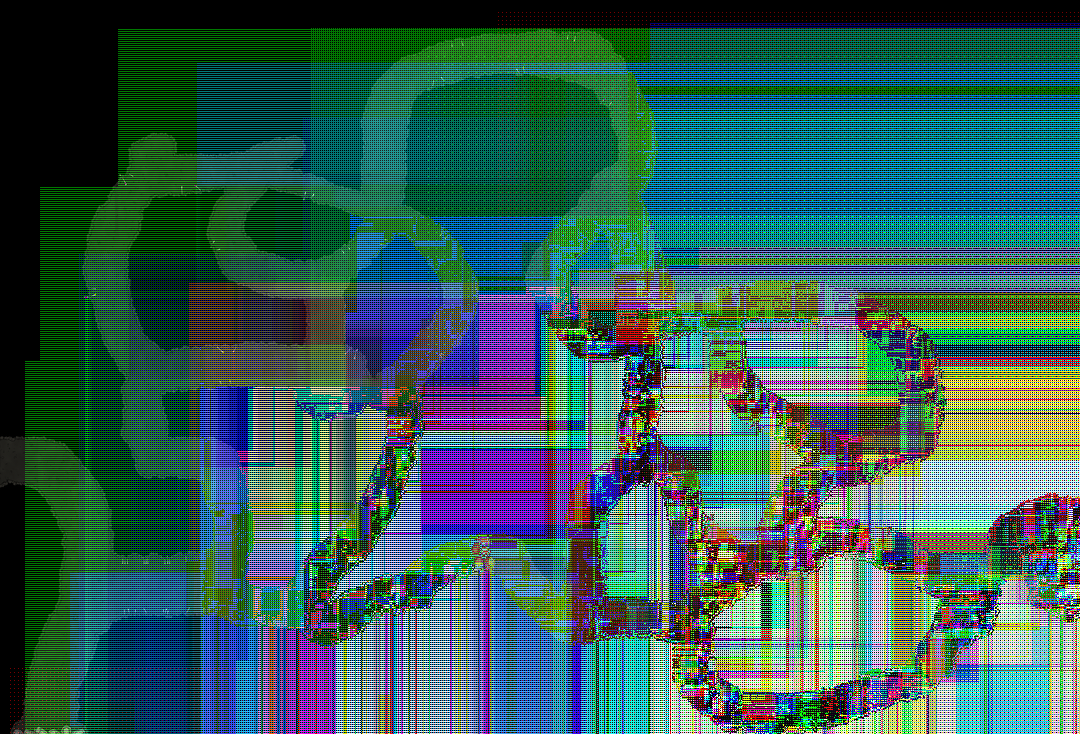 The Dorgesh-Kaan mine.
The Dorgesh-Kaan mine.
Quests
Questing in RuneScape is actually very different from questing in many of its contemporaries. In other MMOs, a “quest” might be “kill 10 goblins,” or “bring me five tomatoes.” They might be repeatable, or procedurally generated. RuneScape isn’t missing these completely, but a quest can also be much more open-ended like “solve this murder,” or “help! My boyfriend has been turned into a chicken.” Even quests like “Demon Slayer” are about fighting a specific demon, with rituals and tools learned beforehand. I didn’t play other MMOs as much, but I’m assured that RuneScape was ahead of its time in this respect.
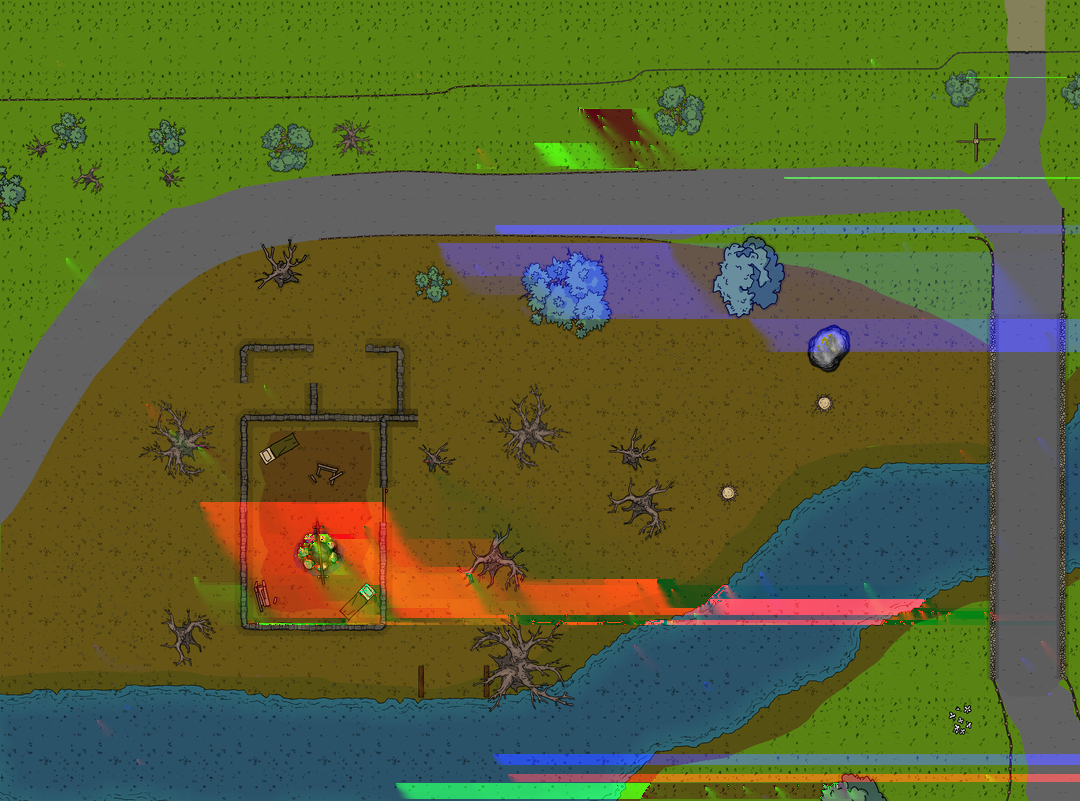 The goblin house.
The goblin house.
Treasure Trails
After Part 1 and Part 2, I had initially planned a Part 3, where I would fine-tune the system based on what I’d learned in Part 2. Since “Compromised Handoff” and “Quid Pro Quo” are strictly more difficult than another type of clue, this involved moving them up to the lowest numbers in the table and then allowing them to count for 3 clues each. This forces the division between “short difficult” trails and “long simple” trails (and avoids trails that are both long and difficult), but requires changes to the model. Other tweaks included making the more varied clue types more common (as discussed in Part 2), and swapping loot and intel, as intel is “more important.”
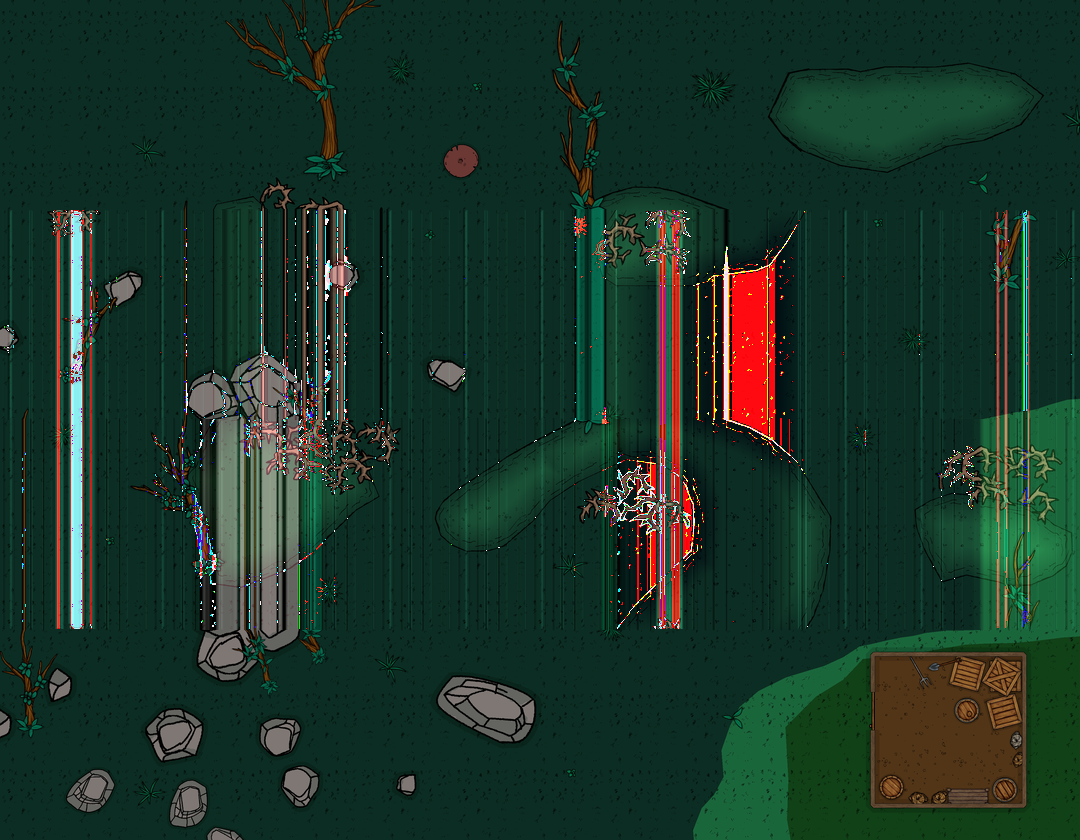 The entrance to Zanaris.
The entrance to Zanaris.
Automation
In discussing Complexity in RuneScape, I touch on automation as a way to reduce a potentially large amount of complexity at the cost of a hopefully small additional amount of complexity. One distinction I did not draw is between “integral” and “non-integral” automation, which could be worth exploring. Integral is something required, like the app for a board game. Non-integral is something not required, for example D&D Beyond. Arguably, this cutoff isn’t as clean as it could be, if a non-integral tool takes on too much complexity and becomes load-bearing.
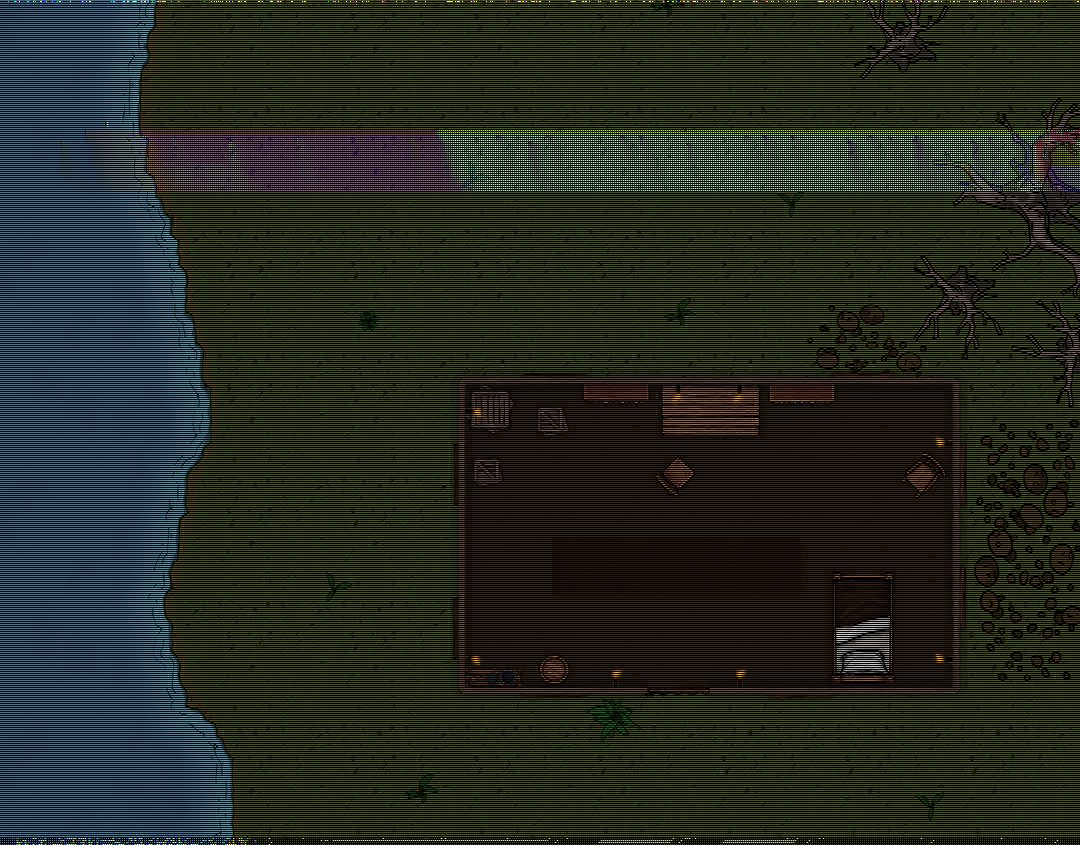 Father Uhrney's house.
Father Uhrney's house.
Maximizing Impact
Another point raised in the complexity article is maximizing the impact of a rule. This is something that 5e does very well, but only implicitly. There are really only two or three “mechanics” in 5e, and they are re-used in the same way. So a save in 5e is always for half damage, while an attack is always an all-or-nothing proposition. Other games also do this of course, rules-lite games of necessity.
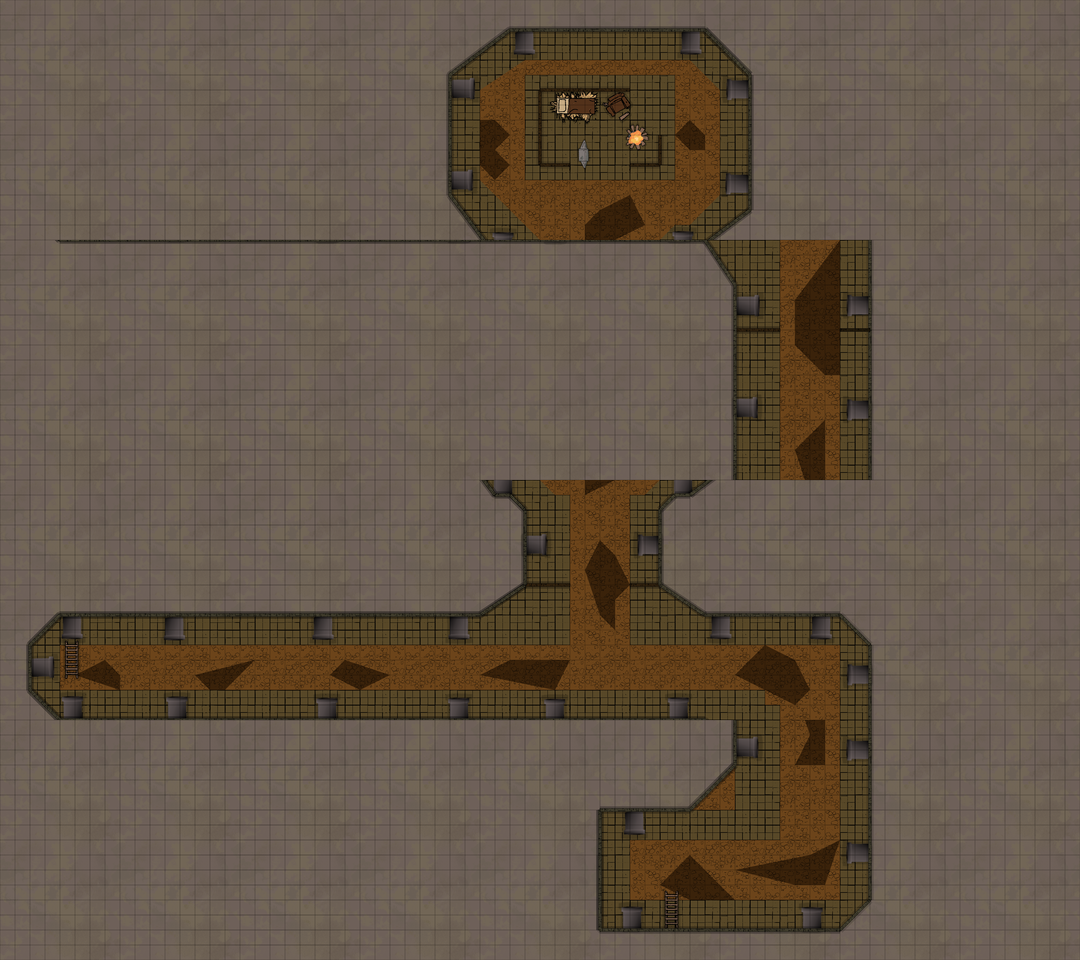 The Draynor sewers.
The Draynor sewers.
Spells
Spells in RuneScape are largely underwhelming, a hundred color-coded variants on Magic Missile. But the spells that aren’t that are particularly interesting to me both for their grounding in the world and their specificity. For the generic Teleport, we get Teleport to Varrock and Teleport to Ardougne (and so on) which build the world both by implication and effect (I mentioned this contortion briefly in Defining Terms). Instead of Create Food and Water, RuneScape gives us Bones to Bananas and its upgrade Bones to Peaches, which are both much weirder. For these reasons, I would consider spells to be part of the “world” of any RuneScape-inspired TTRPG, and not the core rules, where they appear in most modern systems.
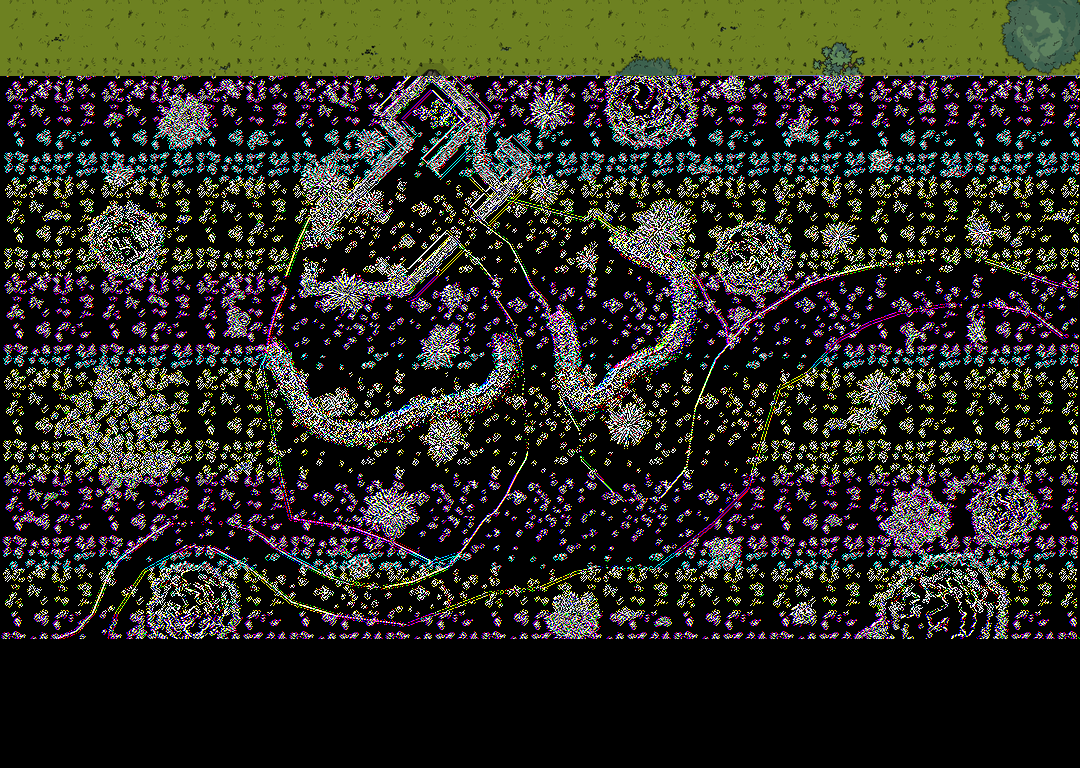 Entrance to the H.A.M. hideout.
Entrance to the H.A.M. hideout.
Milestones
When writing about quests, I was thinking of them as equivalent to “adventures” or “modules” in the way that GM would build their world. But I think a more fruitful avenue to explore could have been quests as milestones: free-floating goals for players to discover and accomplish, events to punctuate a longer campaign with. If I were to write it again, this would be the angle I took.
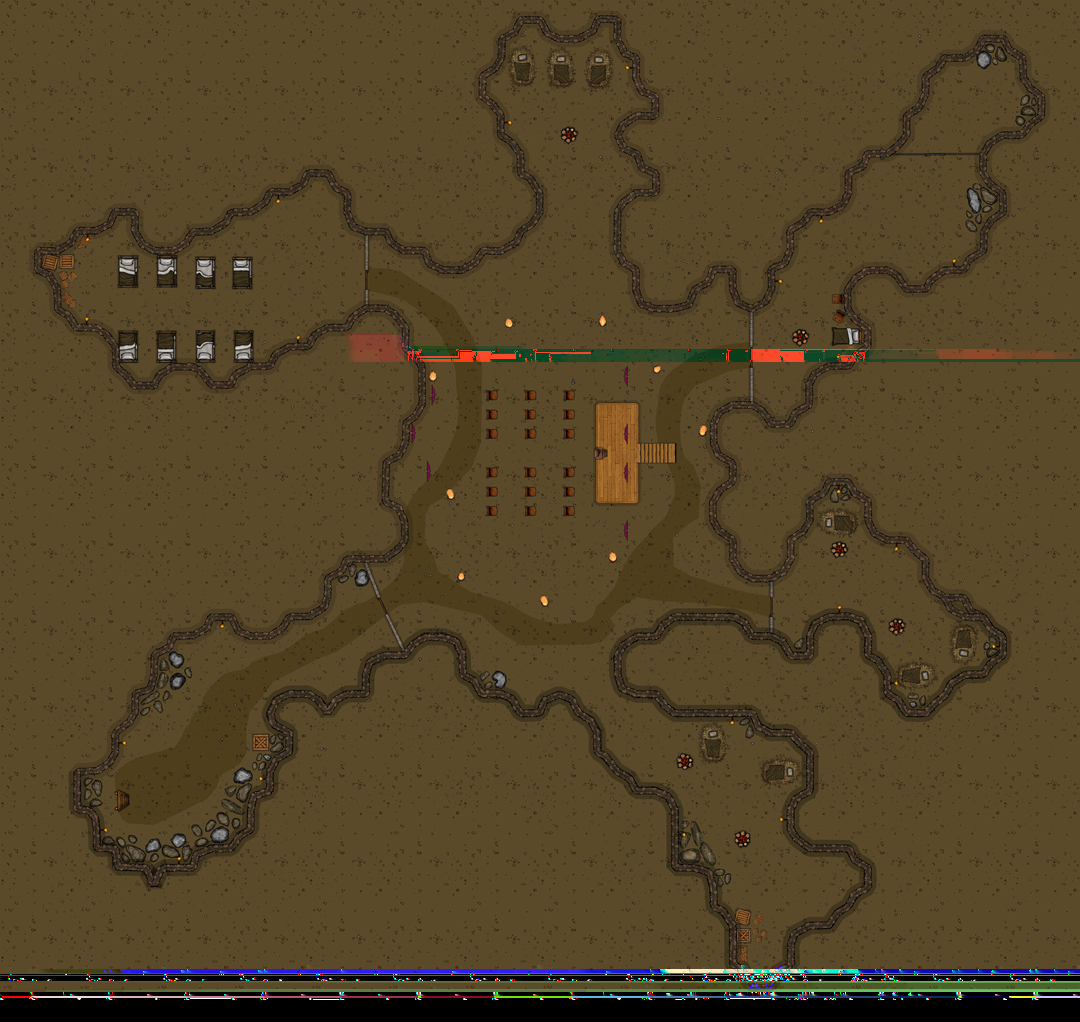 The H.A.M. hideout.
The H.A.M. hideout.
Locked Content
RuneScape has a lot of “locked” content. Runecrafting and Herblore are important skills that cannot be used without quests to initiate your training. Most of the game is literally locked behind an out-of-game paywall. While it may be annoying at times, I think these are strengths. All kinds of complexities become opt-in subsystems, and the processes to unlock them double as de facto tutorials. It’s smart and it’s efficient. Possibly, this would have been a more interesting place for Character Builds to go, but I think the principles there are also important to keep in mind, if unrelated.
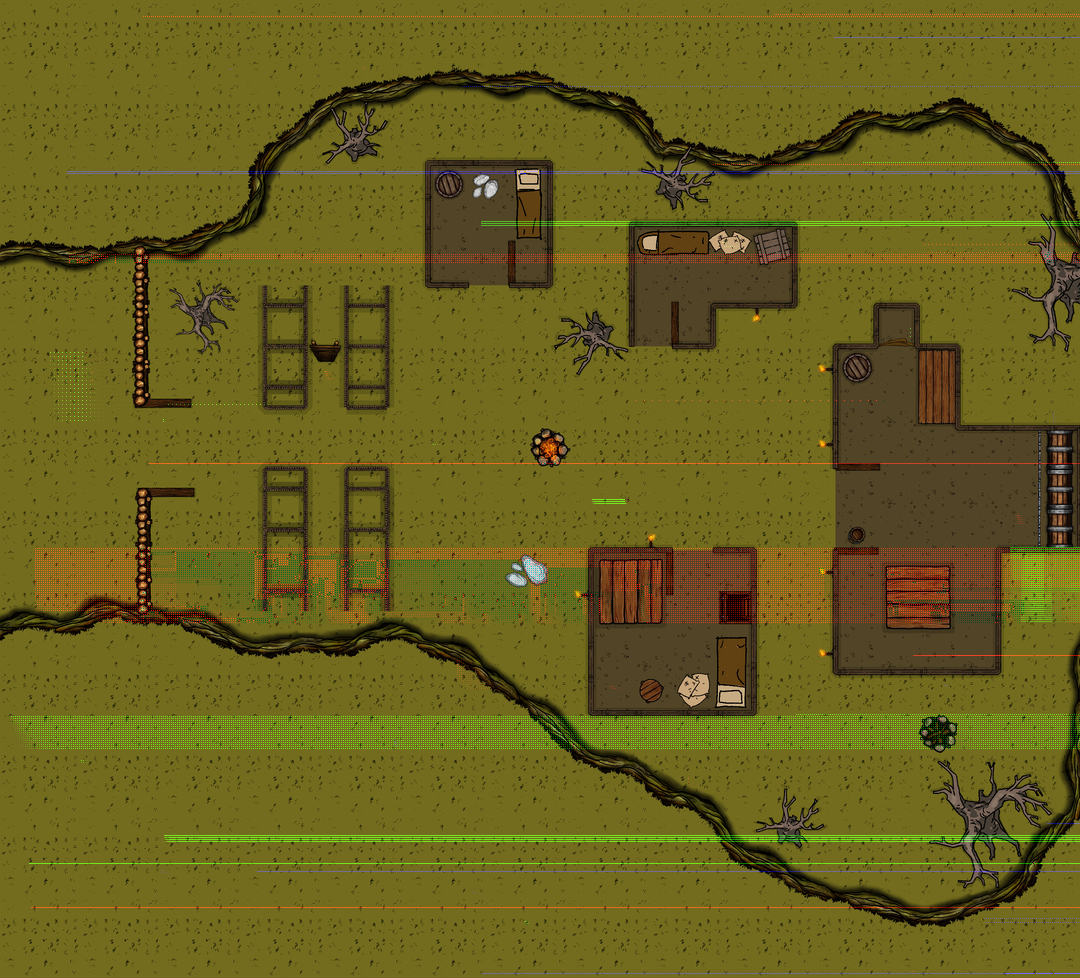 The goblin village.
The goblin village.
Factions & Guilds
One thing that RuneScape doesn’t have is faction play.1 On occasion you may need to choose a side in a conflict, or “infiltrate” a gang, but you seldom gain benefits from it past your initial reason and even more rarely does it require anything of you past an initiation rite. But I think this could give us several useful tools, including more diagetic management of renown, a natural explanation for locked content and other opt-in systems, and a means of interacting with otherwise-isolated conspiracies and world events.
Factions are slightly distinct from “enterprises” in my mind, because they are larger structures that players join, not player-driven schemes. Still, rules for running enterprises might be a good template for how to manage factions, or at least a starting point.
I also think that “guilds” are worth calling out as a separate consideration. They feel like factions from the perspective of a RuneScape player because they have requirements and initiations and you get access to their resources by joining. But conceptually, the function of a guild is to give you something to aspire to, not to be a stepping stone to other goals. Guilds are great big player-driven quests, openly challenging the players, reminding them of the heights that are possible in the game.
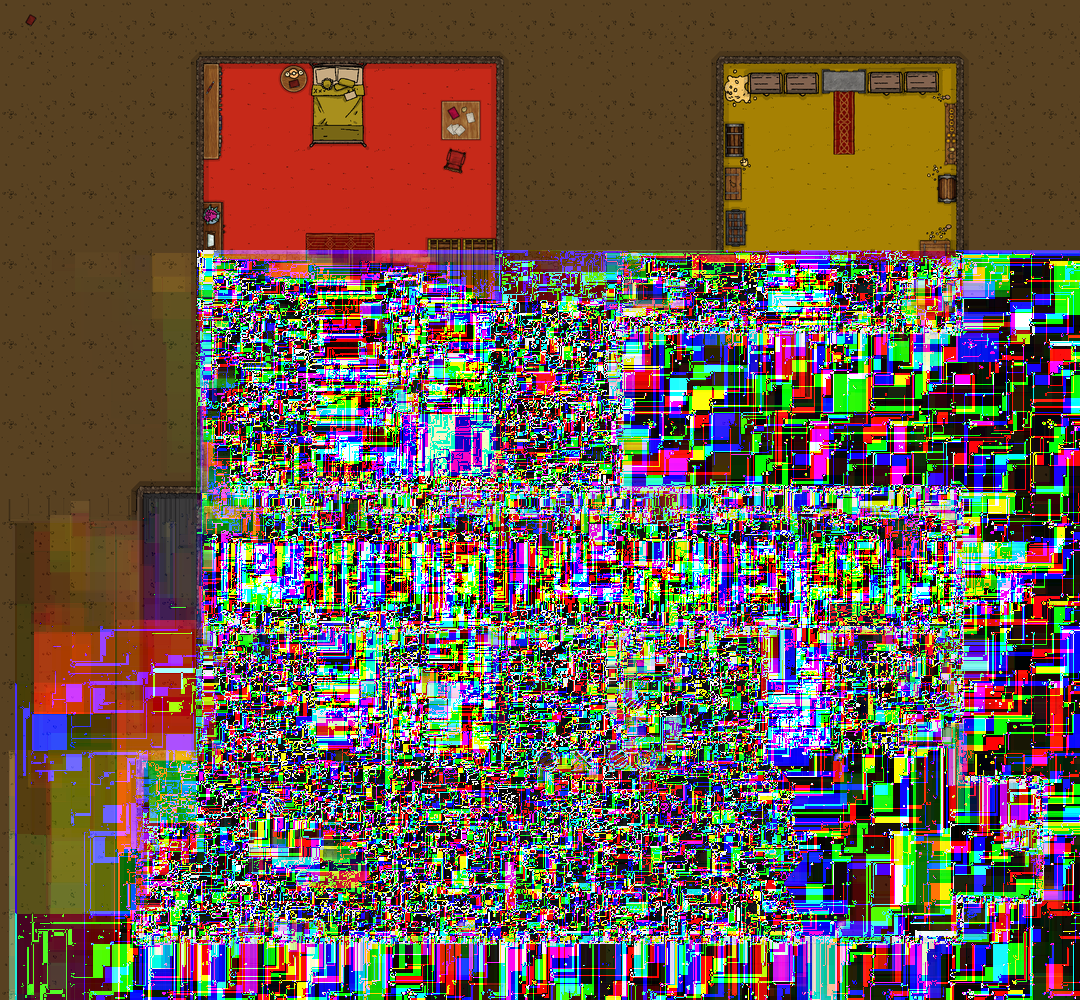 The Phoenix Gang hideout
The Phoenix Gang hideout
Minigames
There is more theory to be mined from the concept of the minigame. In effect, D&D is a Frankenstein monster of minigames (or subsystems) already, the rules switching with geographic and temporal scale. Adding new rule sets for specific tasks and areas is a natural extension of this. In practice, I got fruitfully distracted by my one worked example, and I hope to keep going with it.
I also want to make the distinction between minigames and skills. Part of the reason I was so rigorous in defining skills is my firm belief that “Dungeoneering” is more properly considered a minigame that happens to use skill mechanics. Similarly, I adore the lockpicking minigame in Errant, and even though “lockpicking” is often called a skill, I think this helps illustrate why I think it shouldn’t be. Overloading a game with these systems might make it impossible to run, weighted down with distractions and context switching and attention division. But adding only the best of them and only as warranted can create a richly-textured complex surface to play upon (see, again, Errant).
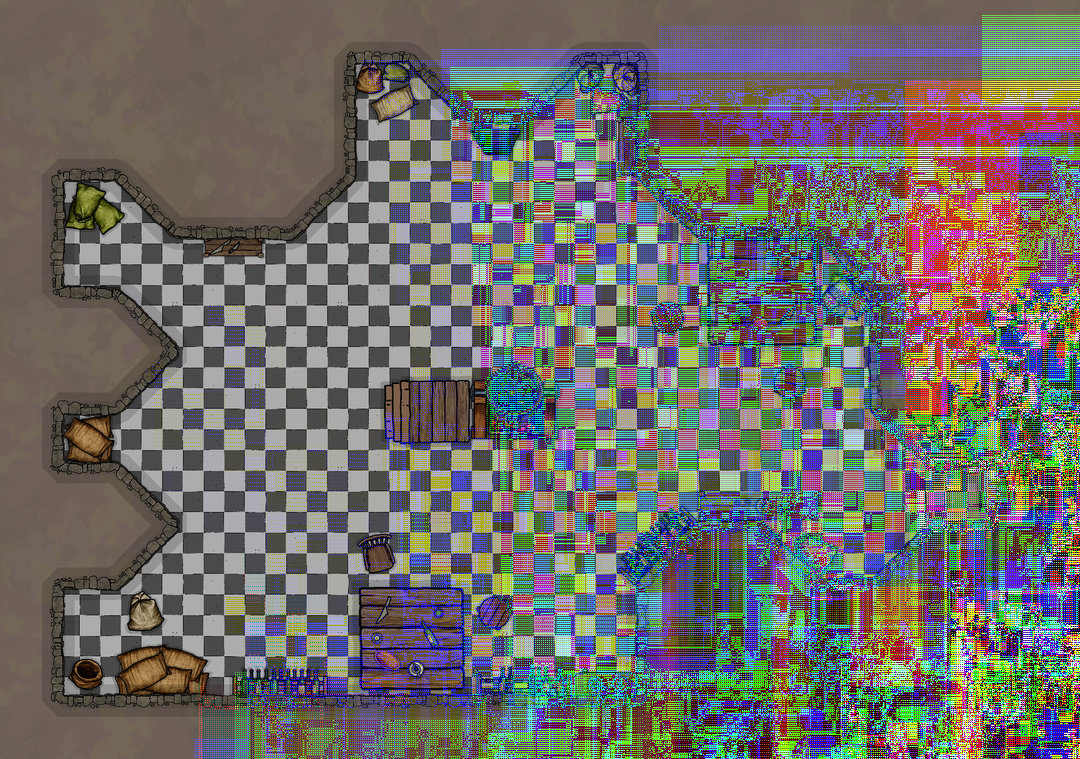 The goblin kitchen.
The goblin kitchen.
Context
When I first laid out these ideas, I didn’t give a lot of context for RuneScape or what this project was really about. The series has been well-received by people who were already familiar with RuneScape and I hope that others have picked up some of it and enjoyed it as well, but I thought I might as well give some historical and personal context to the series, at least a little, before finishing it.
- 2001 January. The three Gower brothers release the public beta of RuneScape, previously DeviousMUD. It’s kind of janky: it’s got odd 2D graphics, and multiple people can’t talk to the same NPC, so important NPCs appear in groups of a few clones.
- 2001 January. Later that month, Wikipedia is launched.
- 2001 December. The three brothers and a friend form Jagex to manage the business of running the game.
- 2003 November. An item duplication glitch crashes the market for certain time-limited tradeable items (party hats). The effects of it are still seen today, as the relative rarities of the colors were inverted.
- 2003 December. RuneScape 2 beta is released to paying members. It features a 3D graphics engine and a lot of other quality-of-life and engine improvements.
- 2004 March. RuneScape 2 is released, and renamed RuneScape. What was formerly RuneScape becomes RuneScape Classic (RSC).
- 2004 April. I am in middle school and I create my RuneScape account.
- 2004 December. I buy my brother RuneScape membership for Christmas. He buys me RuneScape membership for Christmas. Membership is pretty good.
- 2006 June. The Falador Massacre. The first player to achieve 99 Construction hosts a house party, but somehow guests are able to retain their PvP options outside of the boxing ring.
- 2006 August. RuneScape Classic is closed to new accounts.
- 2007 March. RuneScape has more than nine million players. Really? Nine million accounts, maybe.
- 2007 December. Jagex removes the wilderness (a PvP area), and several other areas, in an attempt to clamp down on real-world trading.
- 2008 July. RuneScape HD is released, another major graphical overhaul. The engine changes associated grant mainline RuneScape the name RuneScape 3.
- 2010 September. I am reminiscing with my college roommate about RuneScape. At some time this year, we will return to it.
- 2013 February. Jagex launches Old School RuneScape (OSRS) in parallel, based on a fork of the RuneScape from August 2007. It has the wilderness, and the shitty graphics everyone loves, and some odd guiding principles. New content shall be put up for a poll before being implemented, but there is still lots of new development. It was decided early on that no rewards in OSRS should be “missable,” so, for example, when you finish your first Halloween event, you’ll also receive every reward from past Halloween events.
- 2020 April. The world is ending. States away, my college roommate is now my neighbor, and we are in a “pod” together. We reactivate our RuneScape accounts. We seek solace in OSRS, and we find it.
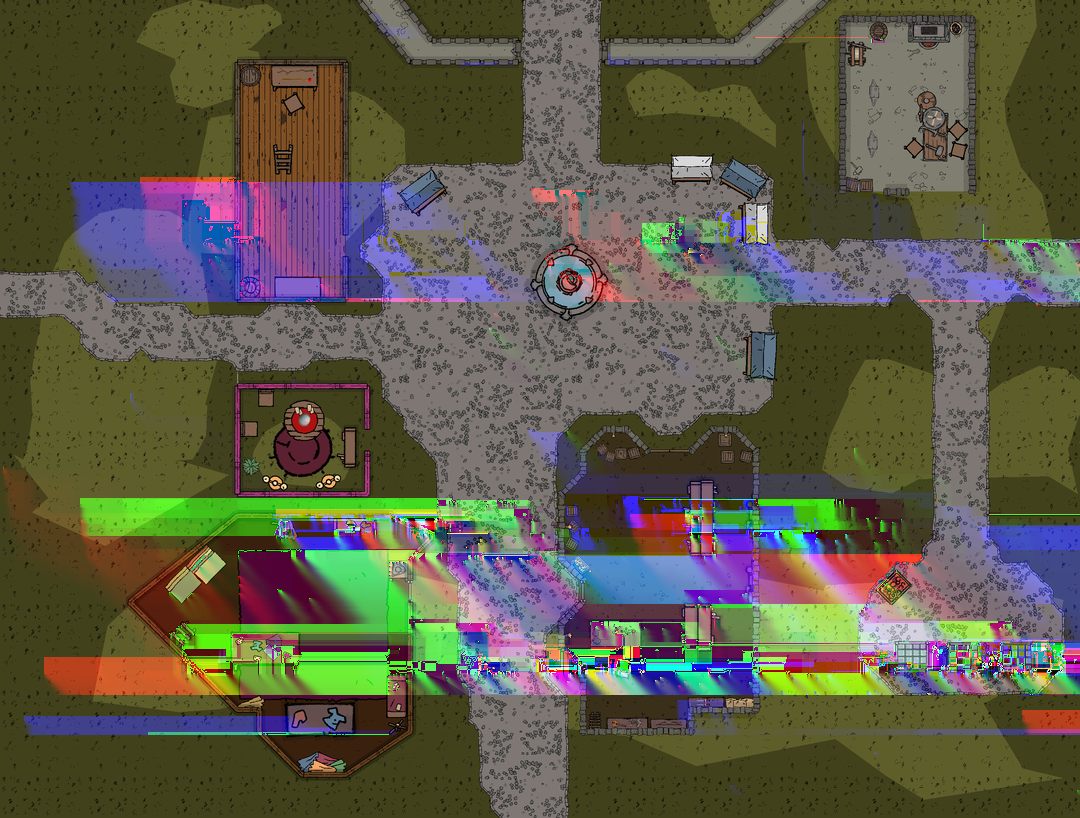 Varrock central square.
Varrock central square.
Other Resources
In writing these posts, I’ve come across many interesting RuneScape resources, which I may not have any direct use for, but which I want to highlight anyway.
- RuneScape Teen Brothel, a short digital zine, sharply written, glitchily illustrated, and really capturing RuneScape as a culture and a mindset, in addition to telling a personal, melancholic story. I can’t speak personally to the trans experience or the historic ERP authenticity, but obviously, CW for those things.
- Video Gaming the System, NPR reporting on “How Hyperinflation in Venezuela Led to Clan Warfare in Old School RuneScape.” It has nostalgic music. It’s entertaining to see everything anew through the host’s eyes, and it’s fascinating to learn the specific overlap of circumstances that made OSRS the game of choice for Venezuelan gold-farmers and the lengths they went to to protect the racket.
- Open RuneScape Classic, a truly monumental project to reverse-engineer the RSC server from captured network data and archived copies of clients. You can play on their server, host your own, or run it single-player.
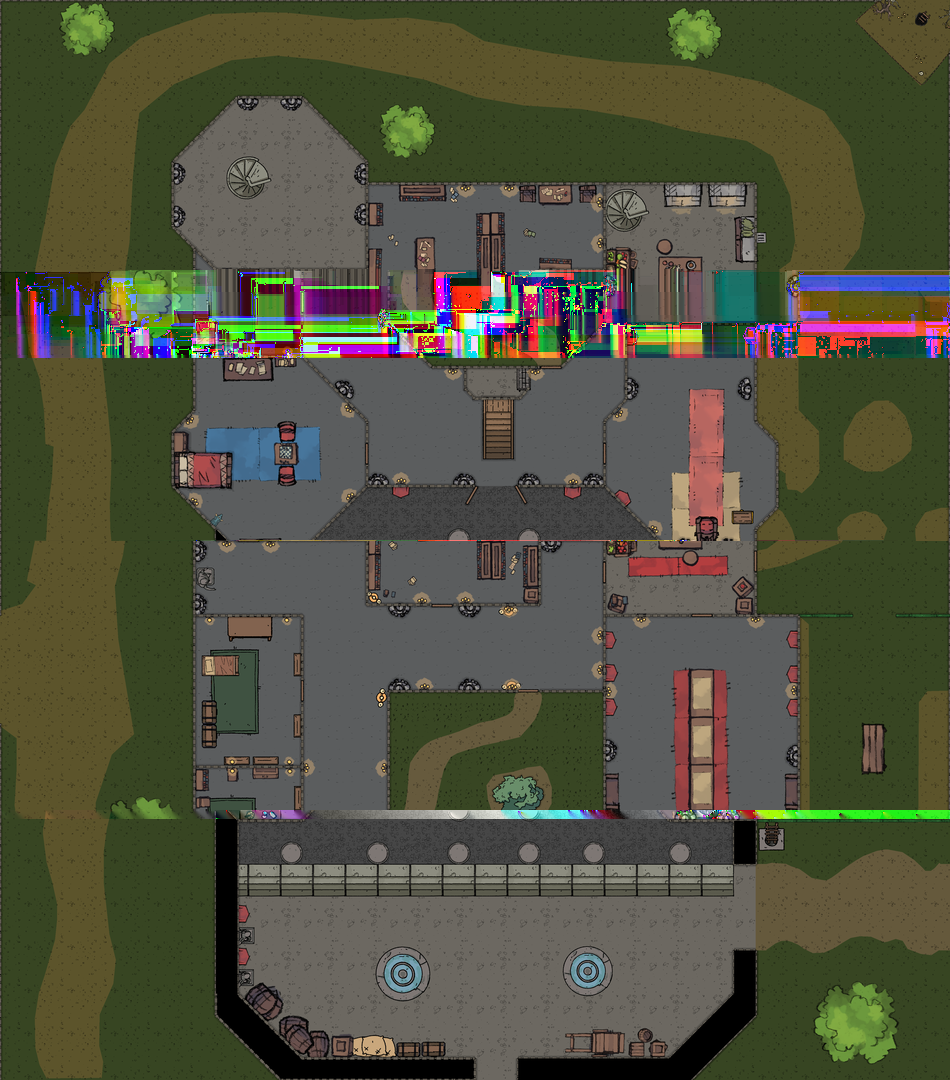 Varrock palace.
Varrock palace.
Wisdom
Hard-won and not universal.
- RuneScape is like Pokémon: it’s only fun when your friends are also playing it.
- There is no “good at RuneScape; there is only”patient” and “decisive.”
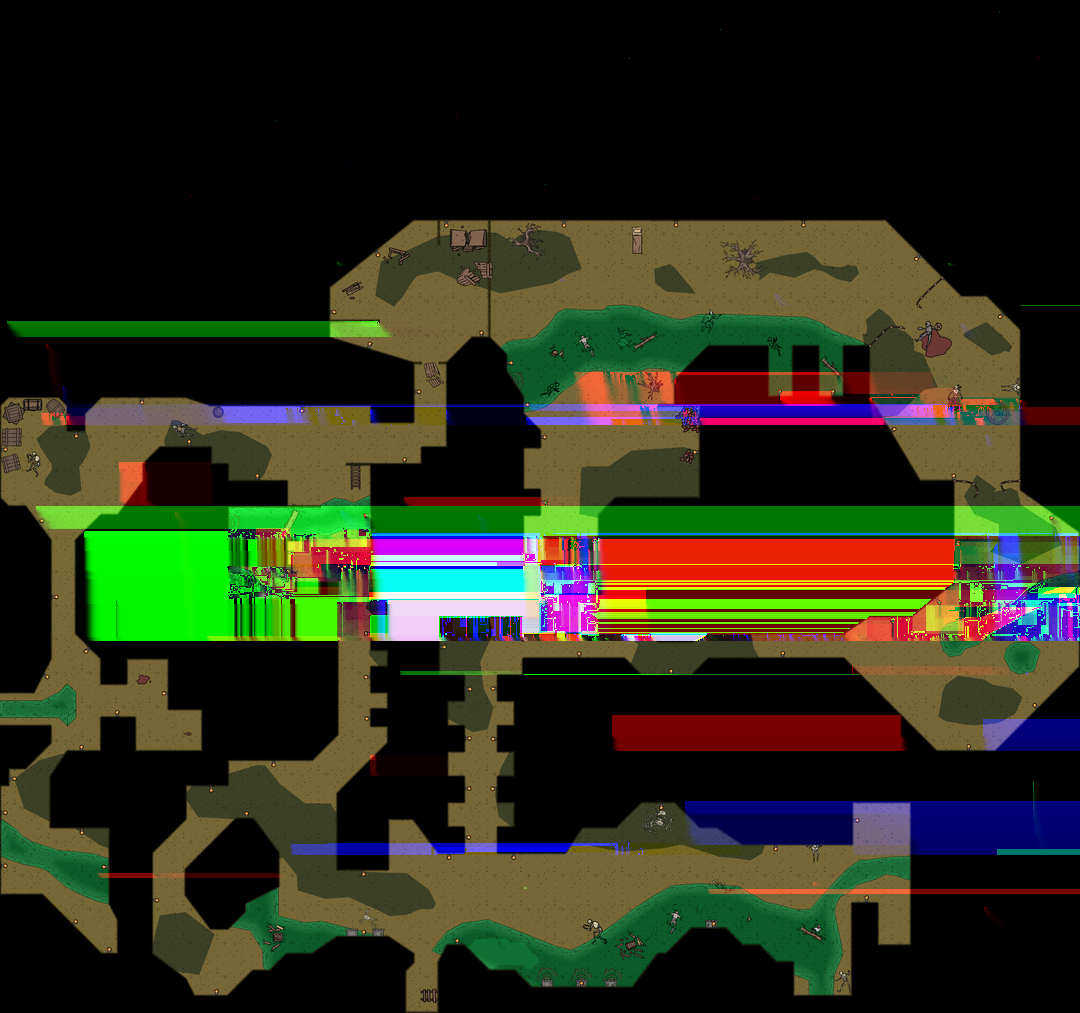 Varrock sewers.
Varrock sewers.
Illustrations
The illustrations here were generated using the pnglitch library, a ruby tool that can “suspend” the PNG format’s aggressive error correction to allow the introduction of many different kinds of errors into the different parts of a PNG file. It’s one of the methods I was most excited to play with, and it was lots of fun getting a feel for what kinds of errors cause which kinds of effect. The source images are D&D battlemaps of locations around Gielinor by Reddit user u/Anime_Squid.
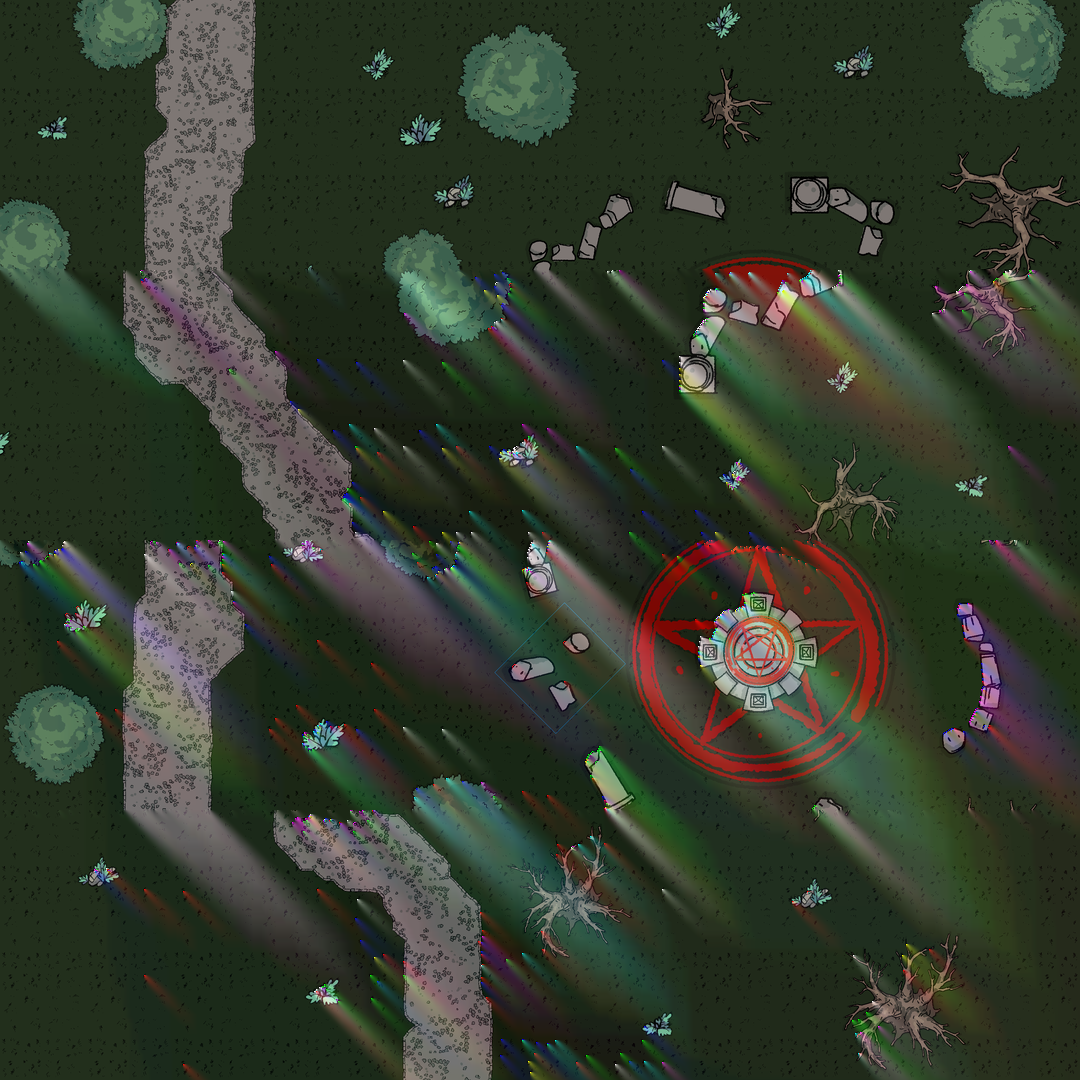 Varrock stone circle.
Varrock stone circle.
Which isn’t to say that RuneScape doesn’t have factions. Off the top of my head, players can join the various Dwarf mining companies of Keldagrim, the Black Arm and Phoenix gangs of Varrock, the White Knights and Temple Knights, and the Hazeel cult. There are also gangs you can “infiltrate” with the right clothes, but never “join” properly, including H.A.M. and the Black Knights.↩︎